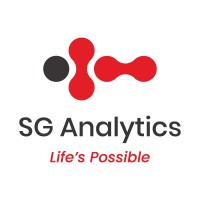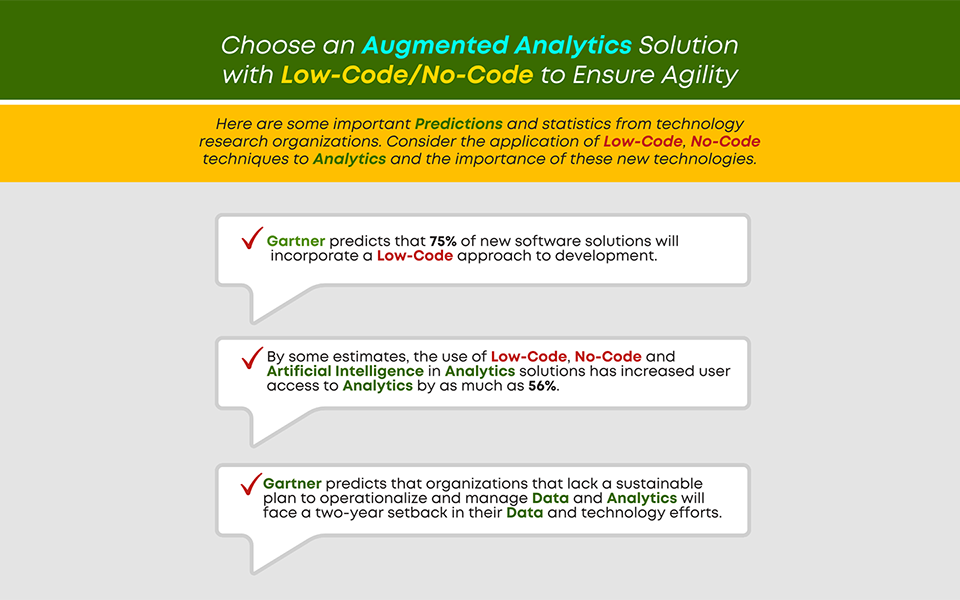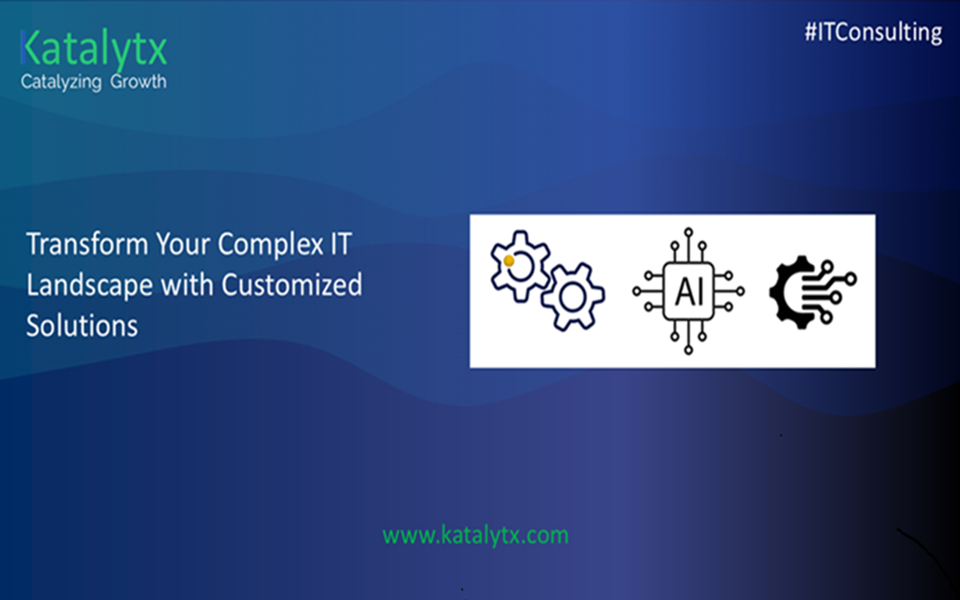With the insurance value chain becoming more connected, insurers are able to gain a better understanding of consumer persona as well as gain a competitive advantage in the market. A recent Gartner report found that enhancing the customer experience and operational excellence is the new driving force for a majority of insurance digitalization initiatives in 2023. Data enables carriers to collaborate with their customers and generate real-time feedback for value-added business solutions.
To effectively execute business strategies, insurers are taking actionable data insights into consideration. And the answer lies in maturing analytics and getting actionable insight faster and more accurately. Let's explore the ways data analytics will positively shape the insurance industry in 2023.
Introduction to Data Analytics in Insurance
The technological landscape changes across industries are also impacting the insurance sector.
It is still challenging for the industry to make their clients understand through which insurance company they could start their insurance journey. Many questions come into consumers' minds, including:
Similarly, insurers are not able to understand customer behavior, policy risk, thefts, and claim surety.
But with the integration of prefiltration data methods and the use of advanced analytics, the sector is now harnessing the vast amounts of data available and employing the right solutions for conscious decision-making. Data analytics is further assisting the insurance industry in every facet of its business operations and in determining the next step.
Read more: Establishing a Data-Driven Cybersecurity Strategy for Business Growth
Leveraging Data Analytics to Transform the Insurance Industry
The rise of digital transformation in the insurance sector has been an ongoing process. It has increased speed, efficiency, as well as accuracy across every domain of insurance companies. Data analytics is presenting the industry with capabilities that enable them to optimize every operation in the insurance value chain. It helps in analyzing the customer’s risk and identifying which client is trustworthy. Even customers today are using data analytics to determine which insurance company offers a minimum price with suitable offers.
Advanced data and predictive analytics systems are assisting the insurance industry in making data-driven business decisions. Artificial intelligence (AI) is further empowering them with high-level data that can be leveraged for improved insurance processes and identifying new opportunities for growth.
-
The Next Frontier for Auto Insurance: Telematics
Telematics involves the use of tech to monitor, collect and transmit data. Within insurance, it is seen in the auto industry, facilitating data exchange. The use of telematics across industries is becoming increasingly popular. The National Association of Mutual Insurance Companies highlighted in their report that the use of telematics is set to grow by 20%.
Telematics assists insurers in gaining an accurate understanding of the risk. Smart IoT devices or sensors like Advanced Driver-Assistance Systems (ADAS) and in-vehicle navigation solutions help in generating invaluable data on vehicle speed, braking patterns, as well as driving habits. This helps in gaining a comprehensive picture of driver behavior, thereby enabling insurers to identify and offer specialized coverage options.
Telematics also assists insurers in accurately predicting and mitigating risk. Predicting risk directly coincides with offering competitive pricing and fostering insurance enrollment for safer driving. The use of data and telematics is further creating a structure for insurers to offer a better customer experience.
Read more: Rising Significance of Big Data Analytics for Exponential Growth
-
Embedded Insurance
The traditional coverage type or insurance options requires customers to engage with a specialized insurance agent. However, with the acceleration of digital transformation, consumers are moving from the traditional ways of interacting with their insurance agents and increasingly integrating digital procedures into their experiences.
Consumers are welcoming new opportunities to search and shop for their insurance products on different digital platforms. From websites to chatbots and voice assistants, the rise in AI-powered solutions is enabling insurance firms to use different data collection avenues and gauge consumers purchasing behaviors to make strategic decisions.
Embedded insurance includes offering customers the choice to opt for travel insurance coverage when booking a flight or as part of an existing policy when making a purchase. Data accumulated from digital channels further assists in offering tailored coverage based on the customer's purchasing journey. It helps in understanding the policies that are purchased and identifying what embedded insurance offerings are more suitable. This further aids in enhancing the overall customer experience and increasing customer satisfaction.
-
Transforming Risk Assessment with Imagery and Geospatial Intelligence
Insurance carriers are used to undertaking surveys along with conducting on-site risk management surveys to understand the potential risks and design strategies for process claims or policies. With the integration of imagery and geospatial intelligence technologies such as satellites, drones, and sensors, insurers can gain a comprehensive understanding of the underlying risks that a policyholder is likely to face.
The imagery data collected from the systems allow insurers to assess the likelihood of disasters. Geospatial data further assesses the risks associated with a location, like traffic patterns and environmental hazards. Together, the collected insights data presents the insurers with the underwriting process, thereby facilitating them to price policies accurately and offer targeted coverage to the customer.
With imagery and geospatial intelligence systems, insurers can also be proactive with their policy coverage and protection. It facilitates valuable data to generate new risk insights.
Read more: Trends in Big Data Analytics: Forecast for 2023
Application of Data Analytics in the Insurance Sector
Advancements in data and technology are emerging as the chief drivers for insurance companies to scale and speed up their operations. Businesses are using data analytics to their advantage. Let's explore some of the key uses of data analytics that are likely to shape the insurance industry:
-
Fraud/Theft prediction
Insurance companies are integrating data analytics to detect insurance fraud. They are driving the use of predictive modeling and artificial intelligence (AI) to prevent fraud before it happens.
-
CRM technology
To manage leads, segment customers, automate routine tasks, and analyze information, insurance companies are incorporating CRM into their everyday operations.
-
Risk assessment
By integrating the ability to combine behavioral data generated by IoT with other factors, insurance companies are using the accumulated data to study and understand driving behaviors and neighborhood safety statistics. They are also adopting predictive analytics to assess risk based on behavioral data.
-
Product optimization
It has been challenging for the insurance sector to customize its policies at the consumer level. However, with access to vast amounts of data and advanced automation, the scenario is changing. By integrating machine learning, insurance companies are focusing on using predictive analytics to understand buying preferences and pricing sensitivity and provide consumers with relevant insurance products.
-
Personalized user experience
With access to increasing sources of third-party data from IoT devices and machine learning, insurers are advancing their ways to turn the customer experience into a seamless automated journey where customers can experience personalized products and pricing.
Read more: The Changing Fintech Landscape: Top Trends for 2023 and Beyond
The Future: Unleashing the True Potential of Data Analytics
Data analytics is constantly evolving, but what's not changing is the value data analytics contribute to insurance sectors. It assists them in identifying their target customers, enhancing customer experiences, streamlining everyday operations, and improving efficiency.
Today policyholders are seeking digital solutions to purchase insurance products, and insurers are employing the accumulated data to understand user persona and work closely to develop value-added business solutions.
Insurance firms are employing artificial intelligence (AI) and machine learning (ML) tools and perceiving the evolving landscape through the lens of ethical application within the insurance space. Emerging technologies are playing an equally important role in understanding tech solutions providers to foster and deploy open platforms for insurers to conduct their core operations.
With telematics and insights into understanding consumer purchasing behavior, insurers are employing the accumulated data in real time and focusing on transparency. They are also fostering open collaboration with other ecosystem partners and customers and leveraging data to serve customers in innovative ways.






























